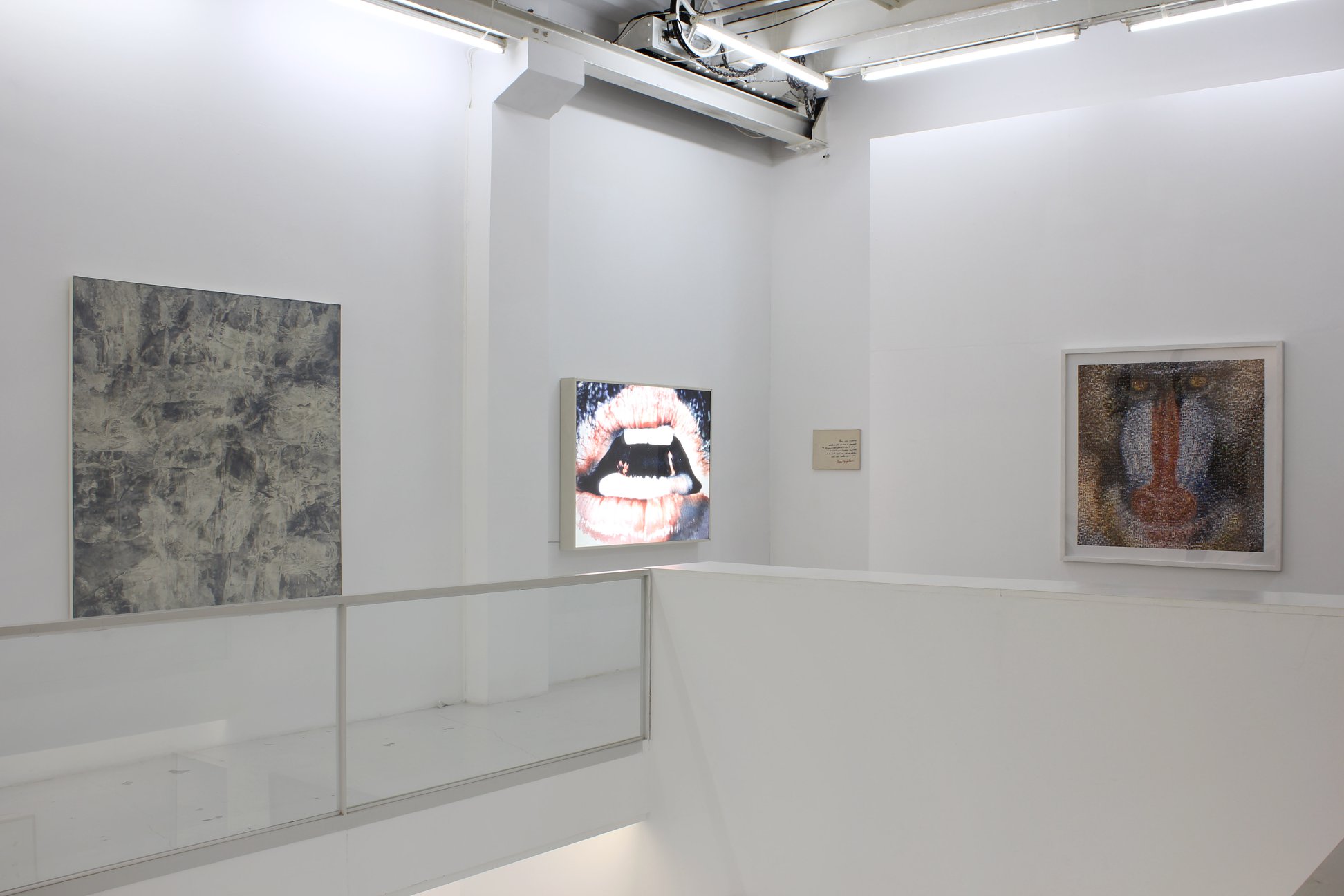Revisão da Matéria Dada II
Revisão da Matéria Dada, part II. Group Show.
Curated by José Mário Brandão.
Galeria Graça Brandão, Lisbon.
Feb, 02>24, 2018
exhibited work:
Ape (2003)

miguel soaresGaleria Graça Brandão |
||
SearchCategories
most viewed |
Revisão da Matéria Dada II2018.Feb
Revisão da Matéria Dada, part II. Group Show. exhibited work:
Revisão da Matéria Dada2017.Nov
Revisão da Matéria Dada. Group Show. exhibited work:
2048, Galeria Graça Brandão, Lisbon (exhibition)2016.Jun
MIGUEL SOARES 2048 Galeria Graça Brandão Lisboa Inauguração | Opening
Faz este ano quinhentos anos a primeira edição de “Utopia” de Thomas More, relato de um viajante português descrevendo uma ilha ficcionada onde pareciam ter sido resolvidos os principais problemas da sociedade de então. No projecto agora apresentado na Galeria Graça Brandão, Miguel Soares simula momentos num hipotético futuro próximo, pegando em certas ideias retiradas da “tradição utópica” portuguesa (Camões, António Vieira, Pessoa), da teoria das Três Idades de Joaquim de Fiore, da utopia de More, ou ainda de elementos da escatologia de algumas das principais religiões, fundindo-as com ideias mais recentes como a da Singularidade Tecnológica (Stanislaw Ulam, Vernor Vinge, Ray Kurzweil), ou a da Hipótese da Simulação (Trilema de Bostrom) que terá raízes anteriores, na Alegoria da Caverna de Platão, por exemplo. A progressiva automatização e substituição do trabalho humano pelo de máquinas poderá um dia libertar o ser humano, tornando todo o sistema económico, político e até a própria ideia de Estado desnecessários? A Singularidade Tecnológica sugere que entre 2040 e 2045 o futuro desenvolvimento da Inteligência Artificial poderá dar origem ao início de um movimento exponencial em que máquinas constroem outras máquinas cada vez mais perfeitas, numa progressão que escapará à compreensão imediata do ser humano. Pouco depois, em 2048 será o centenário de “1984″ de George Orwell. Segundo esta proposta de Miguel Soares, apresentada através de uma animação vídeo e um conjunto de imagens, este movimento criaria uma espécie de “máquina do mundo” capaz de cuidar e alimentar cada ser humano e gerir os recursos do planeta. Será o capitalismo e a competição apenas uma ferramenta, a única, para chegar a tal porto? Poderia esta sucessão de eventos dar origem a um salto evolutivo no ser humano, permitindo por exemplo, a cada pessoa encontrar a sua vocação natural? —- This year is the 500th anniversary of the first edition of Thomas More’s Utopia, the account of a portuguese traveller who describes a fictional island where the major problems of the society of the epoch seemed to have been resolved. In his project at Galeria Graça Brandão, Miguel Soares simulates moments of a hypothetical nearby future, borrowing certain ideas from More’s Utopia and Joachim of Fiore’s Three Ages, as well as from the Portuguese “utopic tradition” (Luís de Camões, António Vieira, Fernando Pessoa); together with elements taken from the eschatology of some of the main religions, assembling them with the more recent ideas of Technological Singularity (Stanislaw Ulam, Vernor Vinge, Ray Kurzweil), and the Simulation Hypothesis (Bostrom’s trilemma), which has ancient roots in Plato’s Allegory of the Cave. Will the progressive automation and replacement of human labour by machines be capable of setting the human being free, rendering obsolete the entire economical and political systems, and even the conception of State? The Technological Singularity suggests that between 2040 and 2045 the future development of Artificial Intelligence may originate an exponential event in which machines build other, more perfect machines, in a progression that will evade human beings’ immediate understanding. Soon after, in 2048, it will be the centenary of George Orwell’s 1984. According to Miguel Soares’ proposal, articulated around an animation video and a set of images, this movement will create a sort of “machine of the world” capable of looking after and nourishing each human and managing the resources of the planet. Is capitalism and competition only a tool, the only tool, to reach such goal? Could this succession of events generate an evolutionary leap in the human being, allowing for each person to find, for instance, their natural vocation?
2048 (prints/image list)2016.Jun
MIGUEL SOARES 2048 Galeria Graça Brandão Lisboa Inauguração | Opening image list
Abraço – 20 anos2012.May
Abraço – 20 anos May 30, June 15, 2012
2007 solo show (Miguel Soares 2007), Galeria Graça Brandão, Lisbon2007.Jun
MIGUEL SOARES 2007 Galeria Graça Brandão Lisboa list of works:
VIDEO OTHER exhibition views
Constelações Afectivas II – Part 2, Galeria Graça Brandão, Lisbon2006.Jun
Constelações Afectivas II, Part 2 June 29 > July 29, 2006 exhibited work: Place in Time Constelações Afectivas II – Part 1, Galeria Graça Brandão, Lisbon2006.May
Constelações Afectivas II, Part 1 May 25 > June 24, 2006 exhibited work: 4 Prelinger music videos Place in Time, Galeria Graça Brandão, Oporto2005.Nov
November 12 > December 31, 2005 click on this Place in Time tag to watch the animation and see the prints.
Art Basel Miami, Galeria Graça Brandão, Miami2004.Dec
Art Basel Miami December 2 > 5, 2004 MACO: Mexico Arte Contemporâneo, Mexico2004.May
MACO: Mexico Arte Contemporâneo May 12 > 16, 2004
Tags: 2004, Galeria Graça Brandão
Time Zones, Galeria Graça Brandão, Oporto2003.May
Time Zones May 10, June 14, 2003 exhibited works:
Time Zones (video/3D animation)2003.May
5′28” This animation was released on DVD: Negativland, Our Favorite Things, Ed. Other Cinema, San Francisco, 2007. In 1994 I made a video for Negativland’s “Crosley Bendix discusses the copyright act” (The letter U and the Numeral Two, 1992).
transcription of Time Zones The Autonomous Commie Republic, which is part of the Russian A boy lying on skins behind our backs was turning the knobs of a <BEEP> (”WA6ODB….with…a question….”) “and, uh …” THIS CONCLUDES OUR TRANSMISSION TO OCEANIA. HOWEVER, LISTENERS IN <CLICK><CLICK<CLICK> |
|